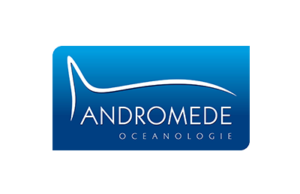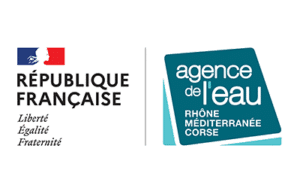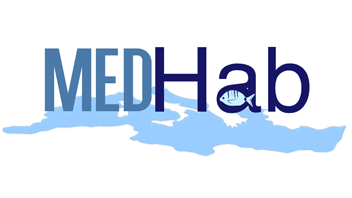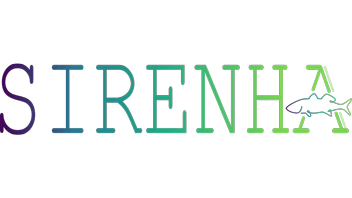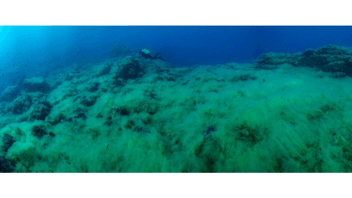
MONITORING NETWORK BY MONITORING ICHTHYOLOGICAL ASSEMBLAGES
PISCIS is the monitoring network of ichthyological assemblages operated since 2015 by Andromède Océanologie with the support of the Rhone Mediterranean and Corsica Water Agency. The characterization of ichthyological assemblages is carried out by annual regional campaign over the period mid-May/end of June, on the entire French Mediterranean coastline bordered by the three regions : Corsica, Provence-Alpes-Côte d’Azur (PACA) and Occitanie.
For each site and habitat (each station), three video blocks spaced a few dozen meters apart are immersed for an acquisition time of 10 minutes. Fish are counted by viewing the videos. One hundred and eighty-six stations were sampled using this method, in parallel with the RECOR (coralligenous reef monitoring) and TEMPO (Posidonia meadow monitoring) monitoring networks. A brochure describing this 360° video method is available on the MEDTRIX platform, part of the PISCIS project.
Since 2020, the method used has changed to make way for environmental DNA. Seventy-five stations were sampled under PISCIS in the three French Mediterranean regions between 2020 and 2023 (16 stations in 2020, 13 in 2021, 30 in 2022 and 16 in 2023). Of these stations, 37 corresponded to the Posidonia seagrass habitat (TEMPO sites) and 38 to the coralligenous reef habitat (RECOR sites). The characterization of fish populations using eDNA will continue in 2024, 2025 and 2026 for 58 PISCIS stations. In addition, 28 coralligenous reef sites and 30 Posidonia meadow stations (-15 meters) will be sampled as part of the contract for biological monitoring of coastal waters in the Rhône Méditerranée and Corse basins launched by the French Water Agency.
Environmental DNA samples are collected using a technique that allows 30 liters of water to be filtered through a 0.2 µm pore filtration capsule. VigiDNA DW2 kits are used, incorporating the consumables required for sampling, notably a tube fitted with a strainer, a very low-porosity filtration capsule (0.2 µm) and a DNA conservation buffer (CL1). For each monitoring site, two kits are used (i.e. two samples per site). Samples are taken using a watertight pump placed on the bottom. A brochure describing the eDNA method is available on the MEDTRIX platform, part of the PISCIS project.
A station comparison tool exists in this project. This tool allows to compare the different metrics calculated and this at different spatial scales of comparison (Mediterranean, Region, Coastal water body). You can visualize all the results directly on the platform, by clicking on the button “Access to maps“, just below.
For the monitoring by eDNA (from 2020), the analysis of the identified species allow the establishment of different indicators such as the specific richness indicator, the functional diversity indicator of fish, the Large Reef Fish Indicator, the crypto-benthic indicator, the thermal indicator of fish… These new indicators are established by the UMR MARBEC (University of Montpellier) and Andromeda.
Contact : Thomas Bockel
Project Leader: Andromède Océanologie – andromede-ocean
Update frequency : Annual monitoring by region (each region, Occitanie/PACA West, PACA East and Corsica, is monitored every three years).
Partners : Rhone Mediterranean Water Agency
Study reports
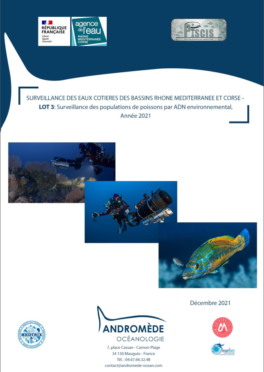
• Fish monitoring by 360° camera (2015 to 2019)
• Biological Monitoring – Fish Population Monitoring – Year 2020
• Fish Population Monitoring by Environmental DNA – Year 2021 –
• Fish Population Monitoring by Environmental DNA – Year 2022 –
• Fish Population Monitoring by Environmental DNA – Year 2023 –
Associated scientific publications
- Benchmarking bioinformatic tools for fast and accurate eDNA metabarcoding species identification (mathon-et-al-2021)
- Uso de ADN Ambiental en la Evaluación de la Diversidad Funcional y Filogenética de los Peces (marquez-et-al-2021)
- Environmental DNA metabarcoding reveals and unpacks a biodiversity conservation paradox in Mediterranean marine reserves (boulanger 2021)
- GAPeDNA: Assessing and mapping global species gaps in genetic databases for eDNA metabarcoding (marques-et-al-2021)
- Ecological indicators based on quantitative eDNA metabarcoding: the case of marine reserves (Sanchez et al. 2022)
- Global Ecology and Biogeography – The distribution of coastal fish eDNA sequences in the Anthropocene (mathon et al 2023)
- An environmental DNA assay for the detection of Critically Endangered angel sharks (Squatina spp.) – , , , , , et al. (2023)
- Benchmarking fish biodiversity of seaports with eDNA and nearby marine reserves – Manel, S., Mathon, L., Mouillot, D., Bruno, M., Valentini, A., Lecaillon, G., Gudefin, A., Deter, J., Boissery, P., & Dalongeville, A. (2024).
